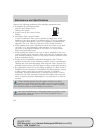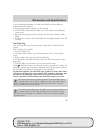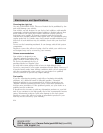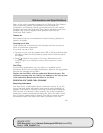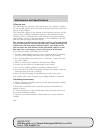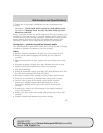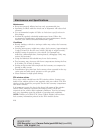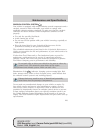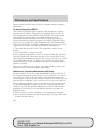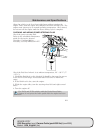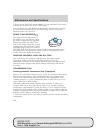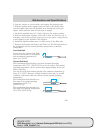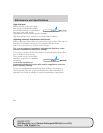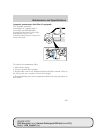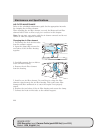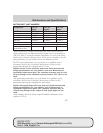
Please consult your Warranty Guide for complete emission warranty
information.
On board diagnostics (OBD-II)
Your vehicle is equipped with a computer that monitors the engine’s
emission control system. This system is commonly known as the On
Board Diagnostics System (OBD-II). This OBD-II system protects the
environment by ensuring that your vehicle continues to meet
government emission standards. The OBD-II system also assists the
service technician in properly servicing your vehicle. When the Check
engine/Service engine soon light illuminates, the OBD-II system has
detected a malfunction. Temporary malfunctions may cause your Check
engine/Service engine soon light to illuminate. Examples are:
1. The vehicle has run out of fuel. (The engine may misfire or run
poorly.)
2. Poor fuel quality or water in the fuel.
These temporary malfunctions can be corrected by filling the fuel tank
with good quality fuel. After three driving cycles without these or any
other temporary malfunctions present, the Check engine/Service engine
soon light should turn off. (A driving cycle consists of a cold engine
startup followed by mixed city/highway driving.) No additional vehicle
service is required.
If the Check engine/Service engine soon light remains on, have your
vehicle serviced at the first available opportunity.
Readiness for Inspection/Maintenance (I/M) testing
In some localities, it may be a legal requirement to pass an I/M test of
the on-board diagnostics system. If your Check engine/Service engine
soon light is on, refer to the description in the Warning lights and
chimes section of the Instrument Cluster chapter. Your vehicle may not
pass the I/M test with the Check engine/Service engine soon light on.
If the vehicle’s powertrain system or its battery has just been serviced,
the on-board diagnostics system is reset to a “not ready for I/M test”
condition. To ready the on-board diagnostics system for I/M testing, a
minimum of 30 minutes of city and highway driving is necessary as
described below:
• First, at least 10 minutes of driving on an expressway or highway.
• Next, at least 20 minutes driving in stop-and-go, city-type traffic with
at least four idle periods.
REVIEW COPY
2005 Econoline (eco), Owners Guide (post-2002-fmt) (own2002),
Market: USA_English (fus)
Maintenance and Specifications
220



